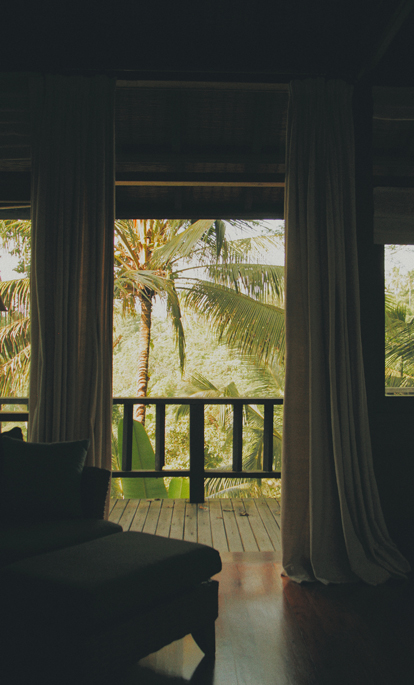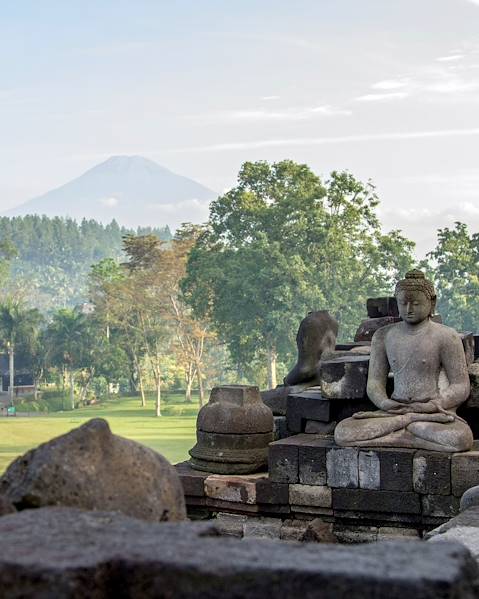Indonesia is a mecca for travellers, drawing millions each year to its thousands of volcanic islands scattered between the Pacific and Indian oceans. The geography of Indonesia showcases Earth’s incredible diversity; from towering mountains and lush rainforests to coastal beauty and geological marvels, this country offers a wealth of natural wonders. Read on to learn more about the geography of Indonesia.
Overview
Indonesia, the world’s largest archipelago, is located between mainland Southeast Asia and Australia in the Indian and Pacific oceans. From the tiny north-western island of Sabang to Papua in the east, approximately 17,500 islands stretch 3,400 miles along the equator, covering over 740,000 square miles. The total population of the country hovers around 252 million, making it the fourth most populated country in the world after China, India and the United States. With so many islands, Indonesia’s landscape is highly varied. Visitors can explore fertile rice lands, savannahs, rainforests, high peaks and volcanoes (some rising to over 15,000ft), and pristine beaches that have made the country a magnet for travellers from all corners of the globe.
The Archipelago of Islands
The geography of Indonesia is defined by its vast collection of paradisical islands stretching across the equator. There are two major archipelagos, Nusa Tenggara and the Maluku Islands, as well as 60 smaller archipelagos. Around 6,000 of Indonesia’s islands are populated, the five main islands being Java, Sumatra, Bali, Borneo (known as Kalimantan), Sulawesi and New Guinea. Four islands are shared with other countries; Borneo is shared with Malaysia and Brunei, Sebatik is shared with Malaysia, Timor is shared with East Timor and New Guinea is shared with Papua New Guinea. From the popular tourist destinations of Bali and Jazza to the remote islands of Raja Ampat and Komodo, each island has its own distinct charm. Visitors are invited to delve into the beauty of Bali’s rice terraces, the cultural richness of Java, the untouched wilderness of Sumatra, and the pristine beaches of the Gili Islands.
Mountains and Volcanoes
Indonesia is home to numerous mountains and volcanoes, thanks to its location across two continental shelves along the Pacific Ring of Fire. Java alone contains 50 active volcanoes while some of the larger islands like Sumatra and Java have high mountain ranges. Elsewhere, Central Papua features snow covered peaks all year; the majestic Mount Rinjani in Lombok offers breathtaking views from its summit; and Mount Batur in Bali provides a unique sunrise trekking experience. Travellers can also explore the iconic Mount Krakatoa and the awe-inspiring Mount Merapi, known for its frequent eruptions.
Rainforests and Biodiversity
The geography of Indonesia includes vast rainforests that are home to an incredible array of flora and fauna. The island of Borneo boasts the world’s oldest rainforest and is home to endangered orangutans; the lush jungles of Sumatra are inhabited by Sumatran tigers and elephants; and Komodo National Park is famous for its namesake dragons. Single horn rhinoceroses, saltwater crocodiles, giant lizards and anoa (pygmy buffaloes) still find a home in Indonesia, and many species of snakes, insects and birds abound. On the coast, mangrove swamps and marshes flourish while subtropical vegetation – such as oak, pine and hardwoods – thrive at higher altitudes. And among Indonesia’s fascinating and diverse flora, visitors can marvel at the Rafflesia flower, the world’s largest individual flower.
Coastal Beauty and Marine Life
Arguably Indonesia’s biggest draw is its stunning coastline and pristine beaches. The white sands of Bali, the turquoise waters of the Gili Islands, and the untouched beauty of the Raja Ampat islands are just a few examples of the coastal delights awaiting visitors. Dive into the colourful underwater world of Indonesia at the Coral Triangle, a marine biodiversity hotspot that’s home to over 3,000 species of fish and 600 species of coral.
Unique Landforms and Geological Marvels
The geography of Indonesia is dotted with unique landforms and geological wonders. There’s the surreal Kawah Ijen crater in East Java, known for its blue flames and sulphur mining; the Dieng Plateau, with its volcanic activity and ancient temples; the stunning Lake Toba, the largest volcanic lake in the world; and the breathtaking Puncak Jaya, the highest peak in Indonesia.
The geography of Indonesia invites visitors to embark on epic journeys, but not every holiday to has to follow the same path. Our specialists can create your tailored-made dream trip, whether you wish to explore Indonesia’s world-famous spots or its lesser-known hidden gems.
















